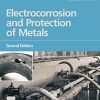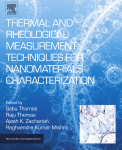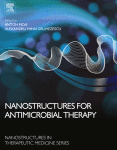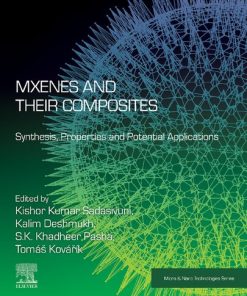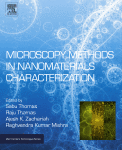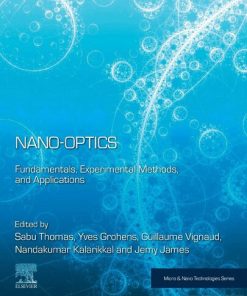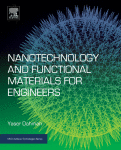(Ebook PDF) Nanodiamonds Advanced Material Analysis Properties and Applications 1st Edition by Jean Charles Arnault 0323430325 9780323430326 full chapters
$50.00 Original price was: $50.00.$25.00Current price is: $25.00.
Nanodiamonds Advanced Material Analysis, Properties and Applications 1st Edition by Jean-Charles Arnault – Ebook PDF Instant Download/DeliveryISBN: 0323430325, 9780323430326
Full dowload Nanodiamonds Advanced Material Analysis, Properties and Applications 1st Edition after payment
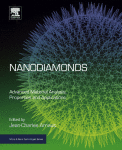
Product details:
ISBN-10 : 0323430325
ISBN-13 : 9780323430326
Author: Jean-Charles Arnault
Nanodiamonds: Advanced Material Analysis, Properties and Applications illustrates the complementarity of specific techniques to fully characterize nanodiamonds from their diamond core (crystalline structure, defects, sp2 carbon, impurities, strain) to their surface (surface chemistry, stability of surface groups, reactivity, surface charge, colloidal properties).
The relationship between physical and chemical parameters sits at the heart of what this book is about. Recent advances in the synthesis of nanodiamonds either by HPHT or detonation are covered, along with extended characterization of the core and surface of nanodiamonds, focusing on the most advanced experimental tools developed for nanoscale diagnosis.
Nanodiamonds Advanced Material Analysis, Properties and Applications 1st Table of contents:
Chapter 1: General properties of diamond
Abstract
1.1. Introduction
1.2. Properties of insulating diamond
1.3. Properties of doped diamond
1.4. Summary
References
Chapter 2: Production and purification of nanodiamonds
Abstract
Acknowledgement
2.1. Introduction
2.2. Types of nanodiamonds and methods of nanodiamond synthesis
2.3. Nanodiamond purification from sp2 carbon and metal impurities
2.4. Disaggregation, crushing, and fractionation of nanodiamond
2.5. Doping of nanodiamond particles
2.6. Conclusion and future outlook
References
Chapter 3: Structure, shape, defects and impurities in nanodiamonds investigated by HRTEM and STEM-EELS
Abstract
3.1. Imaging structure, morphology, and defects in nanodiamonds by TEM
3.2. Probing the electronic structure of diamond and its dopants by Electron Energy-Loss Spectroscopy
3.3. Imaging and spectroscopy of nanodiamond surface functionalization
References
Chapter 4: Raman investigations on nanodiamonds
Abstract
Acknowledgements
4.1. Introduction and scope
4.2. Methodology and experimental issues
4.3. Characteristic features of the Raman spectra of NDs – similarities and differences
4.4. The diamond line profile – phonon confinement
4.5. Low frequency broad signals – core shell model
4.6. Raman spectroscopy of detonation nanodiamonds
4.7. Beyond simple material characterization: in situ Raman spectroscopy and Raman imaging
4.8. Summary
References
Chapter 5: Elemental analysis of nanodiamonds by inductively coupled plasma hyphenated methods
Abstract
5.1. Significance of the problem
5.2. Types and sources of elemental impurities in diamond
5.3. Instrumental methods applicable to the analysis of impurities in diamond
5.4. Hyphenated methods based upon inductively coupled plasma
5.5. Comparison of analytical methods for determination of elemental impurities in nanodiamond
5.6. Applications of ICP-hyphenated techniques
Conclusions and acknowledgments
References
Chapter 6: Paramagnetic defects in nanodiamonds
Abstract
6.1. Introduction to magnetic resonance and nuclear relaxation
6.2. Magnetism in ND
6.3. Nuclear spin-lattice relaxation via paramagnetic defects in ND
6.4. Concluding tips
References
Chapter 7: Photoluminescence of color centers in nanodiamonds
Abstract
Acknowledgements
7.1. The Nitrogen-Vacancy color center
7.2. The Silicon-Vacancy centers in nanodiamonds
7.3. Conclusion
References
Chapter 8: Current issues and challenges in surface chemistry of nanodiamonds
Abstract
8.1. Introduction
8.2. Initial surface termination
8.3. Grafting of more complex moieties
8.4. Future directions and challenges
References
Chapter 9: HR-EELS investigations of hydrogenated nanodiamond films
Abstract
Acknowledgements
9.1. Introduction
9.2. Assignment of diamond HR-EELS peaks
9.3. Nanosize effects in the HR-EEL spectra of nanodiamond
9.4. Hydrogenation and thermal stability of nano- and microcrystalline diamond films studied by HR-EELS
9.5. HR-EELS studies of nano-diamond phase formation by BEN on 3C-SiC(100)
References
Chapter 10: Surface potential of nanodiamonds investigated by KPFM
Abstract
Acknowledgements
10.1. Nanodiamonds and electrical charge
10.2. Kelvin probe force microscopy (KPFM)
10.3. Surface potential of nanodiamonds
10.4. Impact on other nanodiamond properties
10.5. Conclusions
References
Chapter 11: Interactions with solvent
Abstract
11.1. Introduction
11.2. Interaction with solvent molecules in vacuum
11.3. Interaction with solvent molecules under gaseous atmosphere
11.4. Interaction with solvent molecules in liquid phase
11.5. Conclusion and outlook
References
Chapter 12: Toxicity issues: interactions with biological species
Abstract
12.1. Introduction
12.2. In vitro biological effects of ND
12.3. Interaction of ND with blood cells or blood proteins
12.4. Fate in the body and in vivo toxicity of ND
12.5. ND on bacteria and fungi
12.6. Conclusions and challenging issues
References
Chapter 13: Nanodiamonds embedded in shells
Abstract
Acknowledgements
13.1. Introduction
13.2. Nanodiamonds embedded in shells
13.3. Conclusions
References
Chapter 14: Nanodiamonds in composites: polymer chemistry and tribology
Abstract
14.1. Introduction to polymer nanocomposites
14.2. Polymer–ND composites: the influence of ND and its surface chemistry
14.3. Future work
References
Chapter 15: Detonation nanodiamonds in oils and lubricants
Abstract
15.1. Lubricating composition with a solid friction modifier
15.2. The synthesis of DND
15.3. The tribological properties of DND
15.4. DCS action mechanism in the lubricating composition
15.5. Optimal DCS content in the lubricating composition
15.6. The method of producing diamond-containing composition
15.7. Motor and transmission oils with DCS
15.8. DND modification with lanthanides, Mg-sulfonate, and polytetrafluoroethylene
15.9. Technology for producing the lubricant composition with DCS and surfactants
15.10. The main results of the use of diamond lubricant compositions
15.11. Coolants with DCS for cutting metals
15.12. Plastic lubricants with DCS and DNDs
15.13. Solid lubricants
15.14. The advantages of plastic and solid lubricants
15.15. Conclusions
References
Chapter 16: Biomarkers and drug delivery applications
Abstract
16.1. Introduction
16.2. Fluorescent nanodiamond
16.3. Cell labeling and tracking
16.4. Optimizing combinatorial nanomedicine
16.5. Conclusions and outlooks
References
Chapter 17: Applications of color centers as nanoscopic sensors
Abstract
Color centers in diamond as nanoscopic sensors: introduction
17.1. Color centers in diamond as sensor for magnetic and near fields and temperature
17.2. Application of diamond color centers as sensors
17.3. Color centers in far field nanoscopy: superresolution microscopy
Conclusion and perspectives
References
Chapter 18: Nanodiamonds for catalytic reactions
Abstract
Acknowledgements
18.1. General aspects of nanodiamonds
18.2. Applications of nanodiamonds as catalyst or catalyst support in different chemical transformations
18.3. Conclusion
People also search for Nanodiamonds Advanced Material Analysis, Properties and Applications 1st:
nanodiamonds price
nanodiamonds uses
nanodiamond powder
nanodiamond structure
nanodiamonds
You may also like…
Engineering - Chemical Engineering
Science (General)


